Pest Library
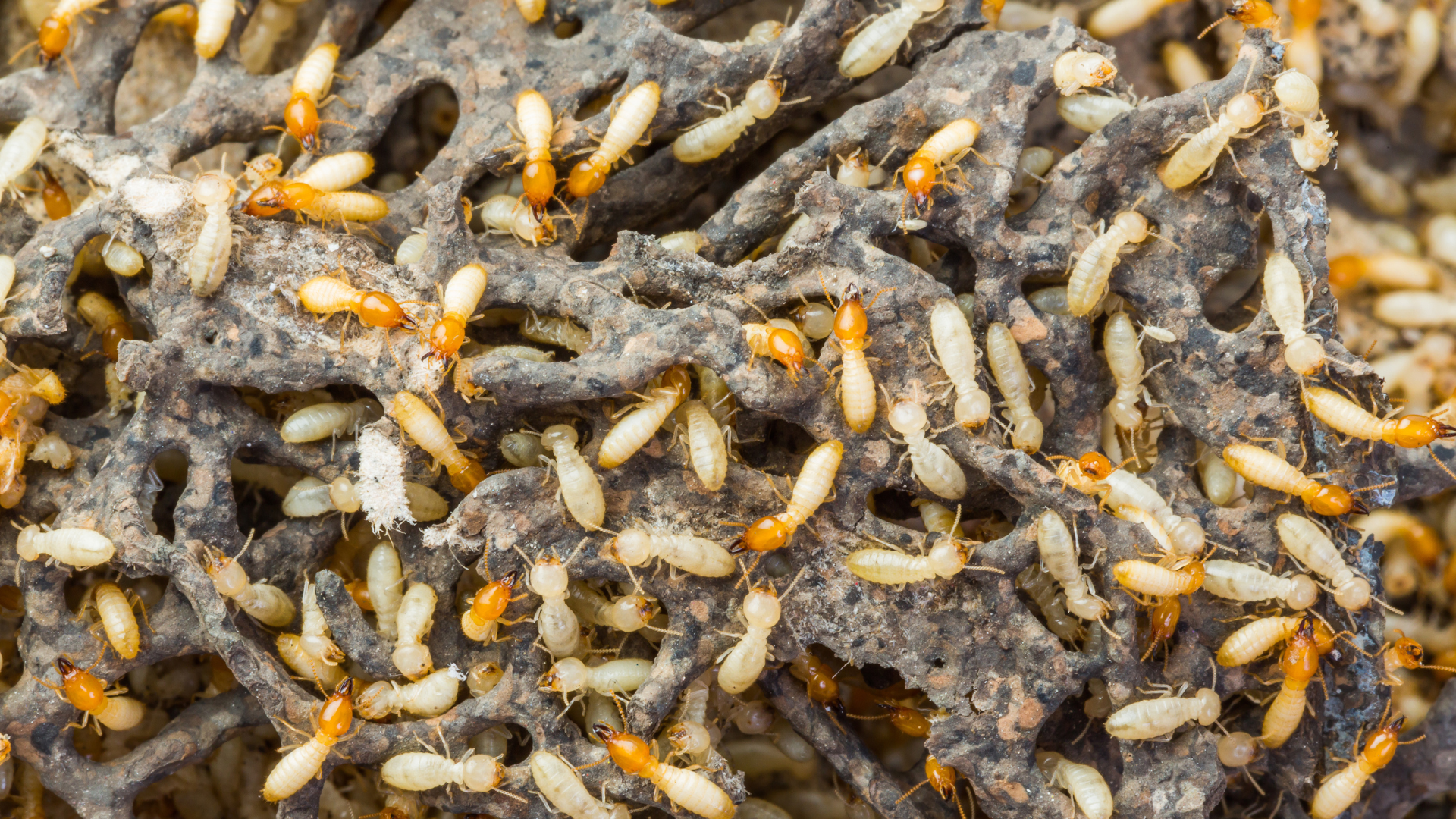
Termites are highly organized social insects that live in colonies, with each member fulfilling specific roles. They feed on cellulose-based materials such as wood and can cause extensive damage to structures and property. There are three main species of termites in Malaysia: subterranean termites, drywood termites, and dampwood termites.
Termites construct elaborate underground tunnels and mud tubes to access food sources and establish new colonies. Their impact on human habitats includes structural damage, which can compromise the integrity of buildings and require costly repairs. Additionally, termite infestations can lead to financial losses and pose health risks, particularly through the spread of mold in damp, damaged areas.
Effective termite control measures typically involve regular inspections, moisture management, and the use of chemical barriers or baiting systems.
These are pencil-sized tubes made of soil and termite saliva that termites use to travel between their nest and a food source. They are often found along walls, foundations, or other surfaces.
Termites can hollow out wood from the inside, leaving it structurally weakened. Look for wood that sounds hollow when tapped or has a honeycomb-like appearance.
After swarming, termites shed their wings, leaving behind piles of discarded wings near windowsills, doors, or other light sources.
Also known as "frass," termite droppings resemble small pellets or sawdust and may accumulate near termite galleries or on surfaces.
Severe termite damage can cause floors or ceilings to sag or buckle, indicating significant structural weakening.
During mating season, winged reproductive termites, known as swarmers, may emerge indoors or around the exterior of the building.
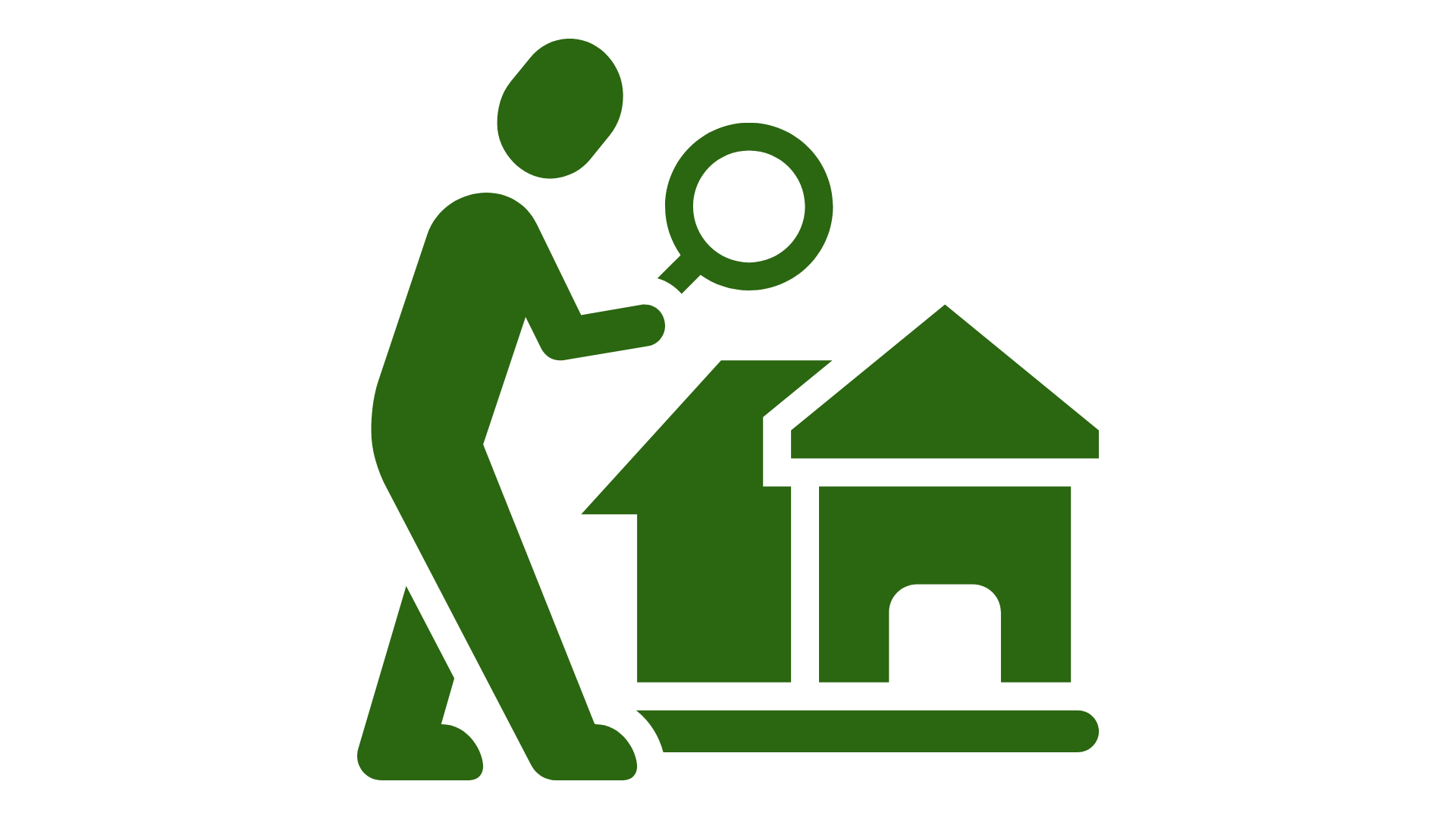
Our technician conducts a detailed assessment of a property to detect and evaluate termite infestations. This involves examining the exterior and interior, including foundations, walls, basements, crawl spaces, attics, and wooden structures, for signs of termite activity.
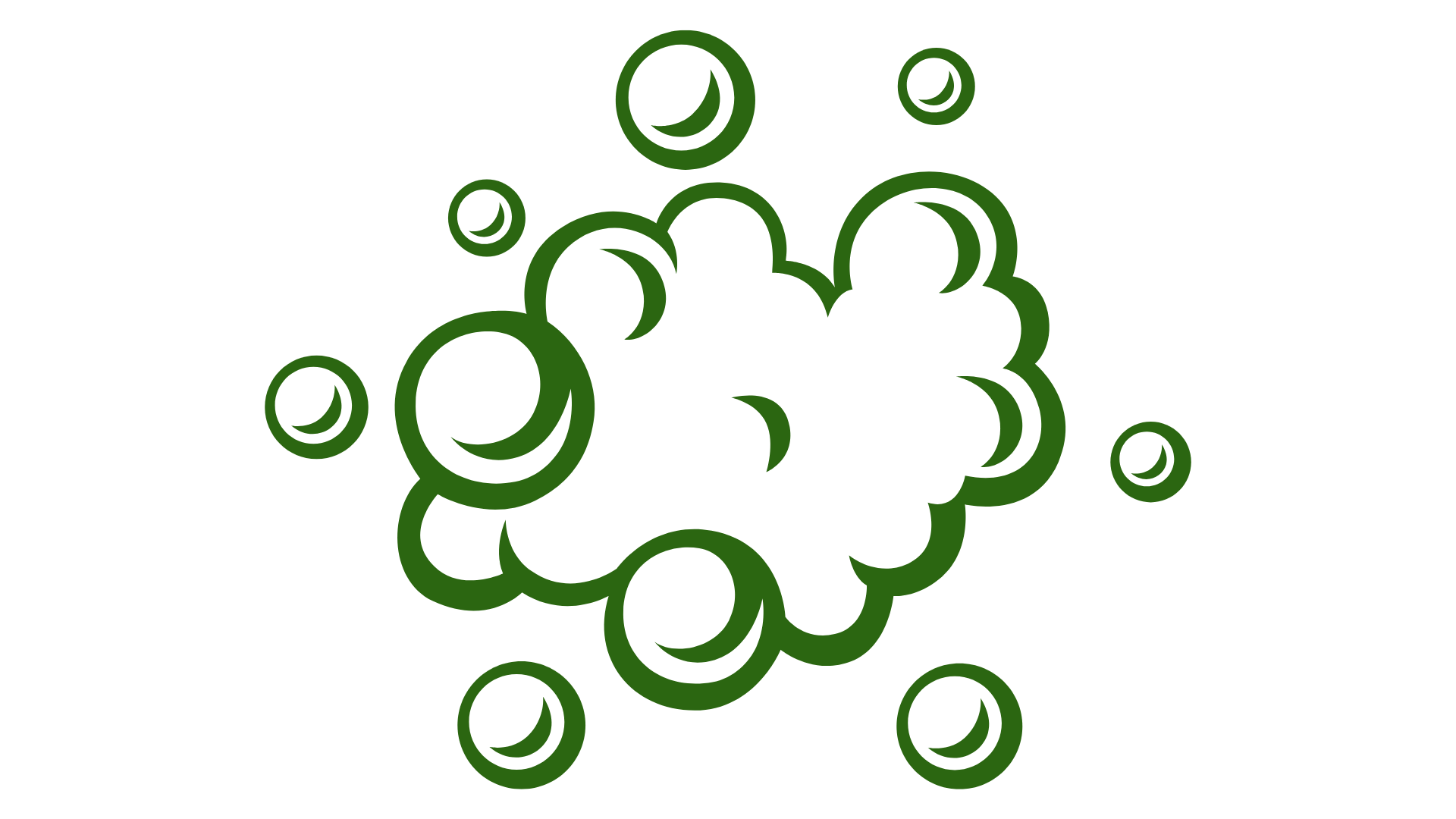
The termiticide is applied around the perimeter of your premises by drilling holes and injecting liquid termiticide into the soil. This process creates a hidden chemical barrier that termites unknowingly come into contact with as they pass through the treated zone to find food. The affected termites then carry the termiticide back to their colony, effectively spreading it among other termites without them noticing thru physical contact.
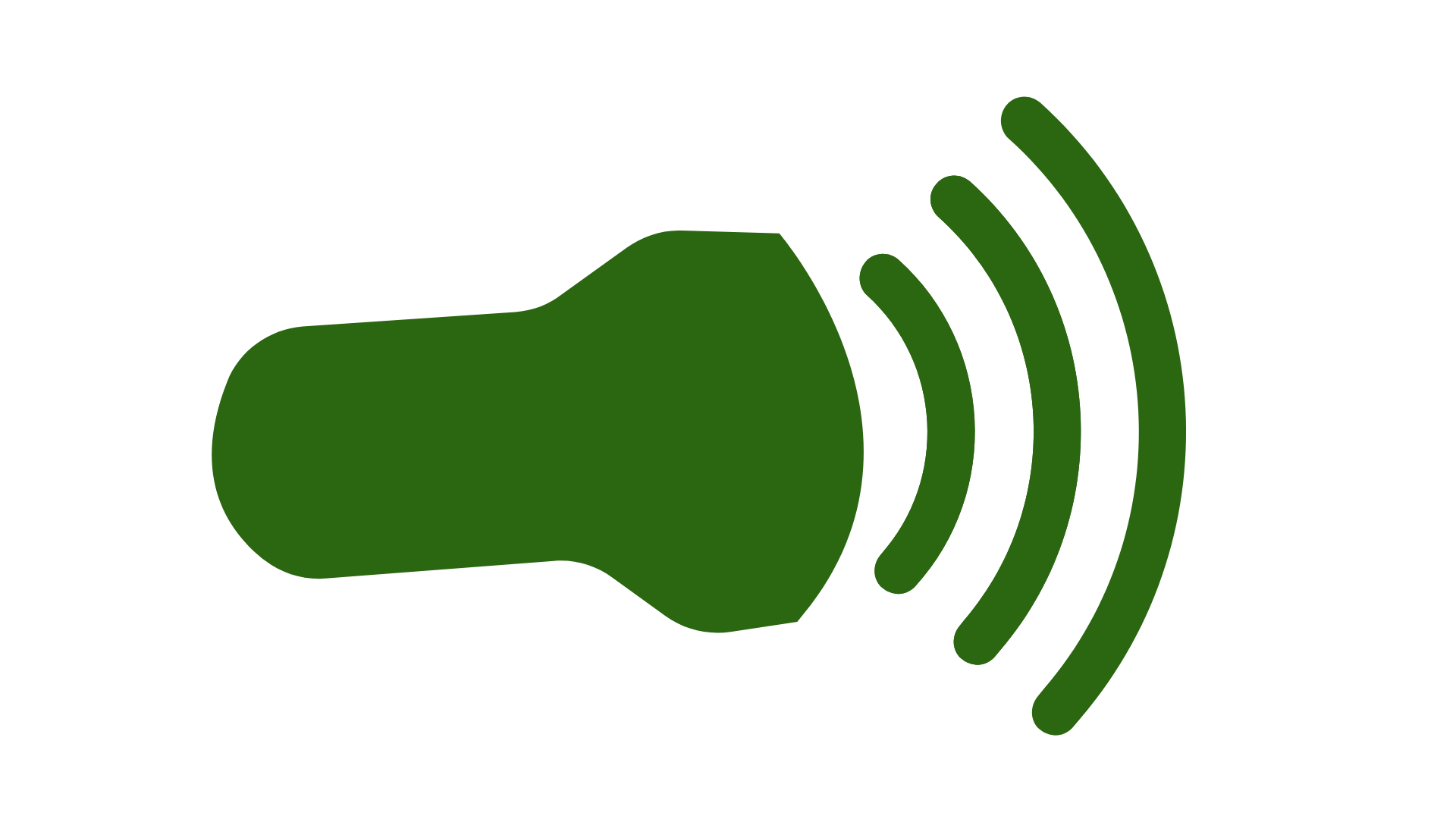
Install baits that contain an active ingredient that inhibits termite growth that the worker termites can bring back to the colony to spread to the colony and gradually affect the colony.

Our technician will offer advice on preventive measures like reducing moisture around the home and maintaining a barrier between soil and wood to keep subterranean termites away.

We will send you a digital report that contains the details of treatment done.
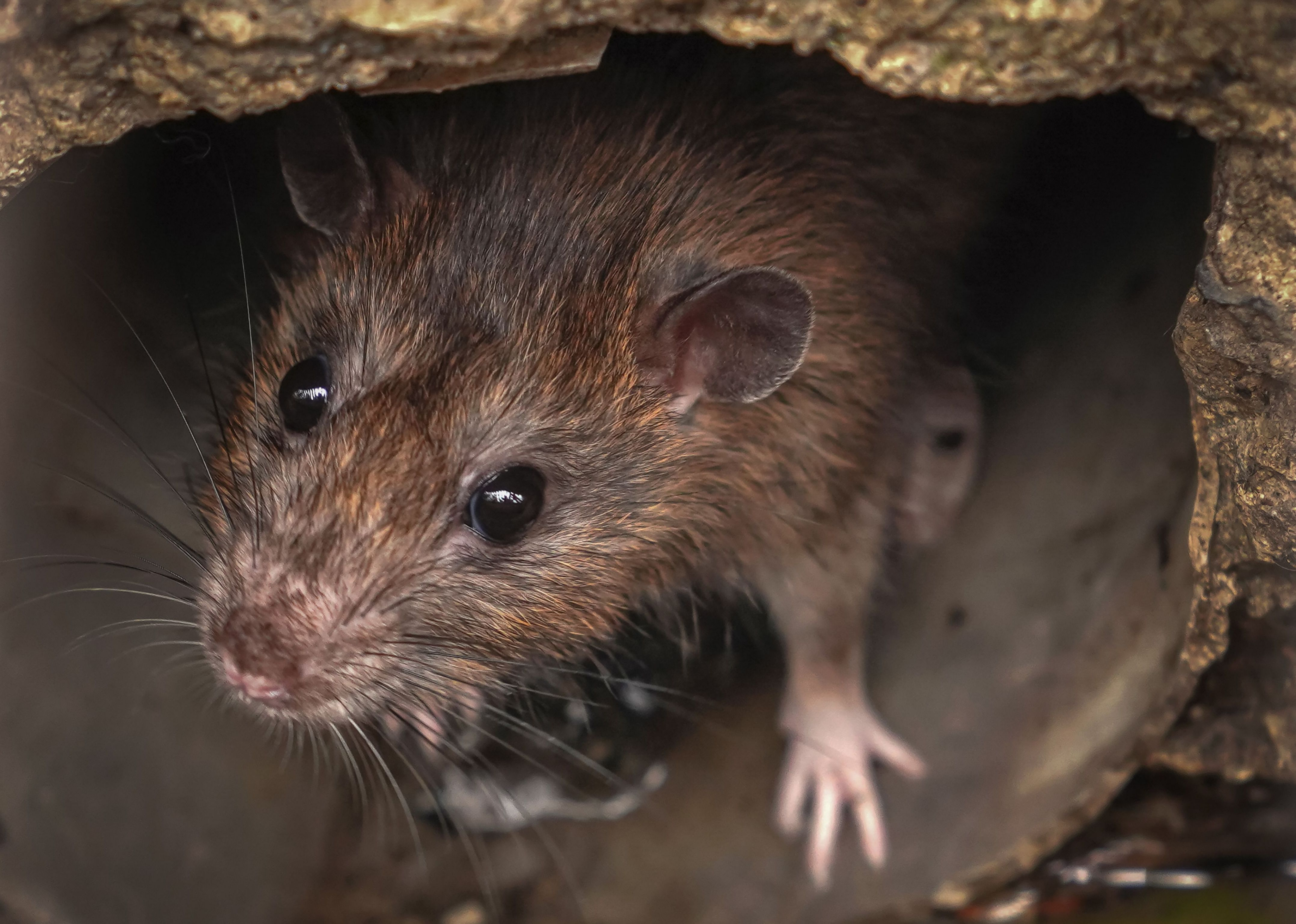
Rodents, such as mice and rats, are highly adaptable mammals known for their prolific breeding and scavenging behaviors. They are nocturnal creatures that seek food, water, and shelter, often invading human habitats in search of these resources. Rodents are skilled climbers, swimmers, and burrowers, allowing them to access homes through small openings and navigate various environments.
Rodents can cause significant damage and health risks. They gnaw on wires, insulation, and structural materials, leading to property damage and potential fire hazards. Rodents also contaminate food and surfaces with their droppings, urine, and fur, spreading diseases such as salmonella and leptospirosis.
Additionally, rodents can undermine hygiene and sanitation efforts, leading to unpleasant living conditions and social stigma. Their presence can also trigger anxiety and stress among residents. Effective rodent control measures typically involve sealing entry points, removing food sources, and implementing trapping or baiting strategies to manage populations.
Rodent feces are typically small, dark pellets, often found along pathways, near food sources, or in hidden areas such as behind appliances or in cabinets.
Rodents have a constant need to gnaw to keep their teeth trimmed, leaving behind chew marks on wires, wood, plastic, and other materials.
Rodents often use shredded paper, fabric, insulation, or other soft materials to build nests in hidden areas such as wall voids, attics, or basements.
As rodents travel along walls and surfaces, they leave behind oily smudges or tracks, particularly in areas where they frequently pass.
Nocturnal rodents may be heard scurrying, scratching, or gnawing, especially at night when they are most active.
Accumulated rodent urine, feces, and decaying food can emit a strong, musky odor, particularly in confined spaces.
Pets, particularly cats and dogs, may exhibit increased interest in certain areas or display signs of agitation or excitement, indicating the presence of rodents.

Our technician will conduct a thorough examination of both the interior and exterior of a property to identify signs of pest activity, assess the extent of infestation, and determine potential entry points and conducive conditions for pests.
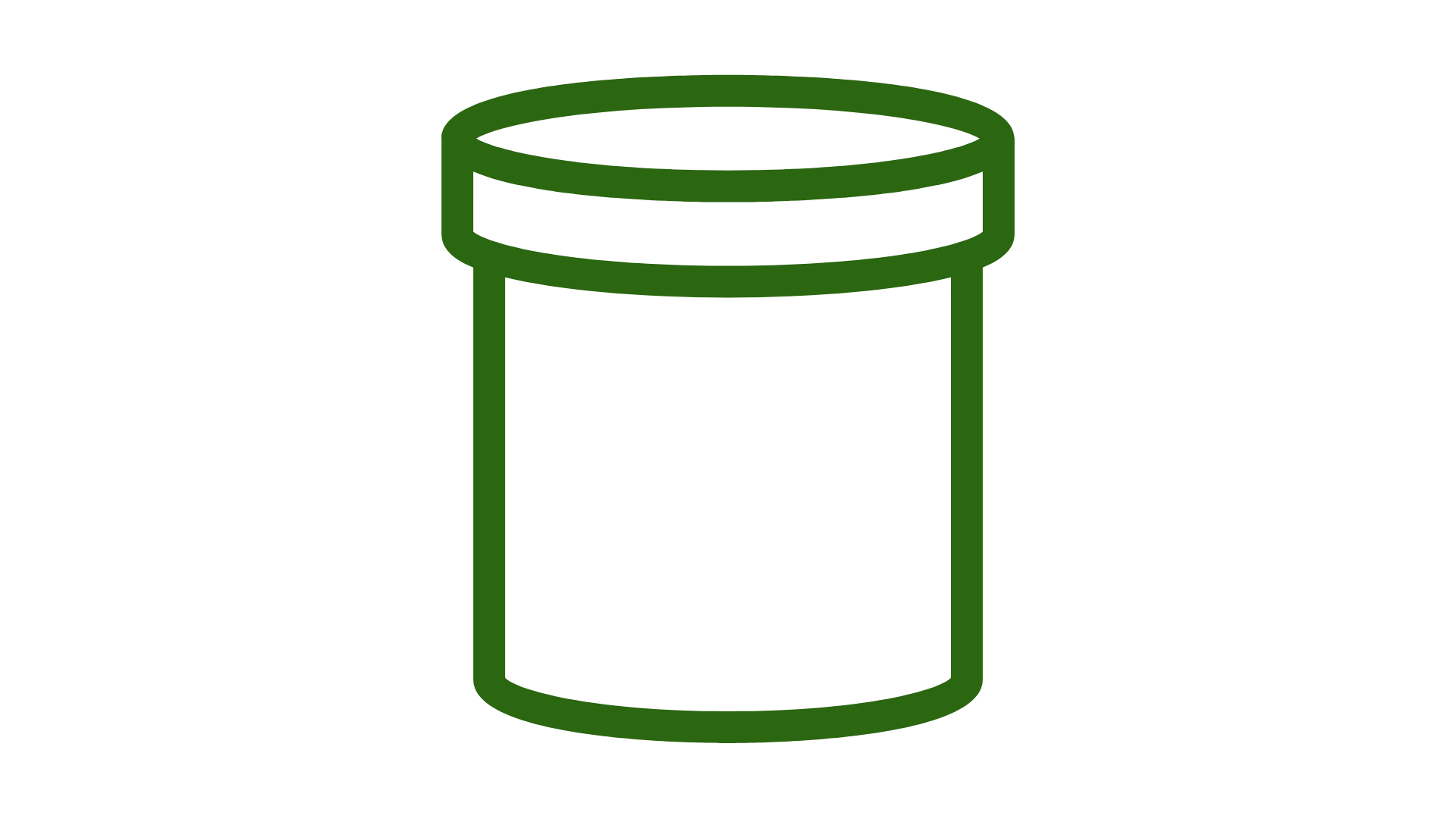
Sealing off or blocking entry points that rodents use to access buildings or structures. This proactive approach focuses on preventing rodents from entering or re-entering a property rather than solely relying on traps or baits to eliminate existing populations.
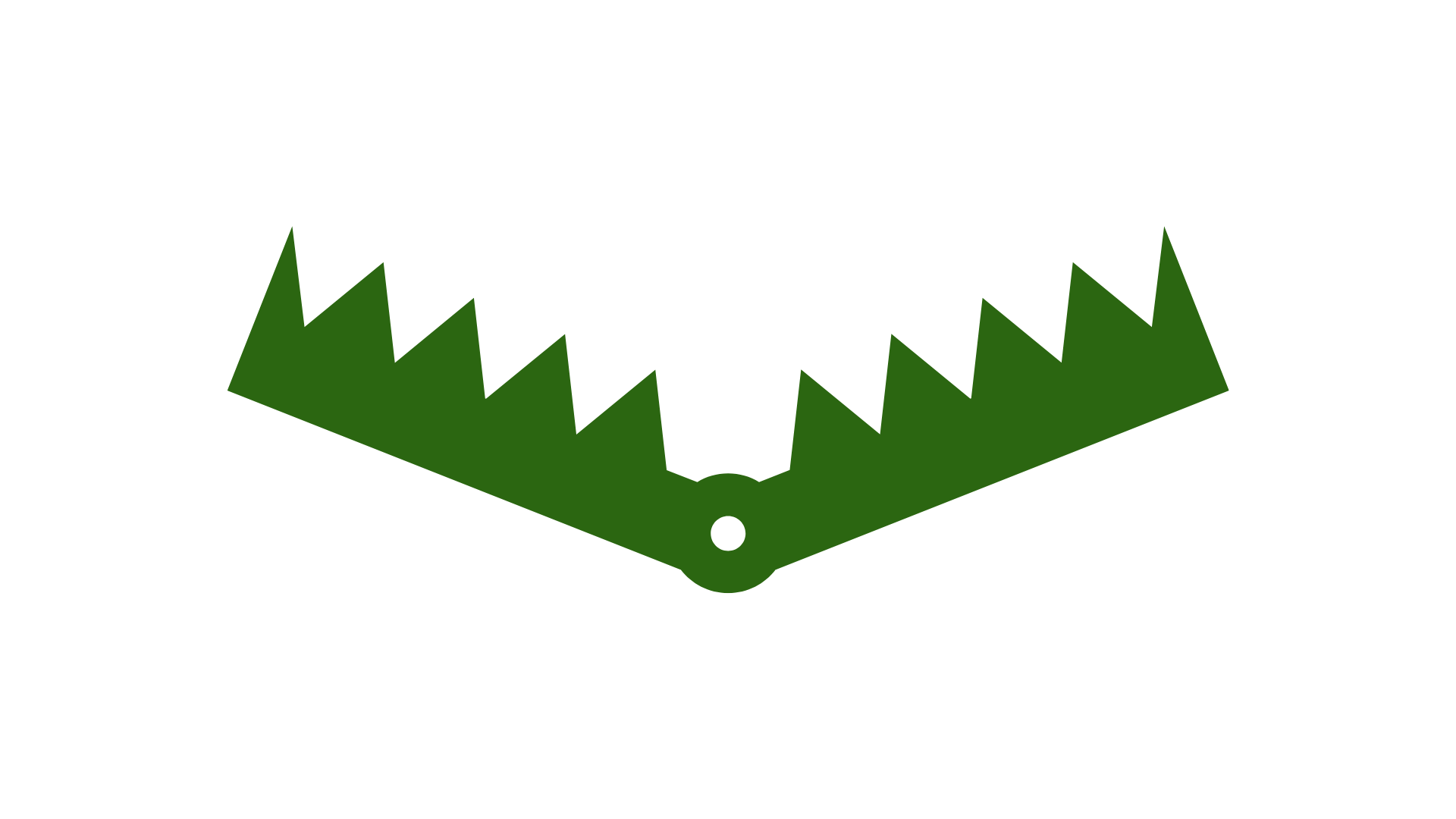
Placed along rodent runways, near entry points, or in areas of high activity to trap and eliminate rodents. They are a non-toxic and discrete method of pest control, suitable for use in both residential and commercial settings.
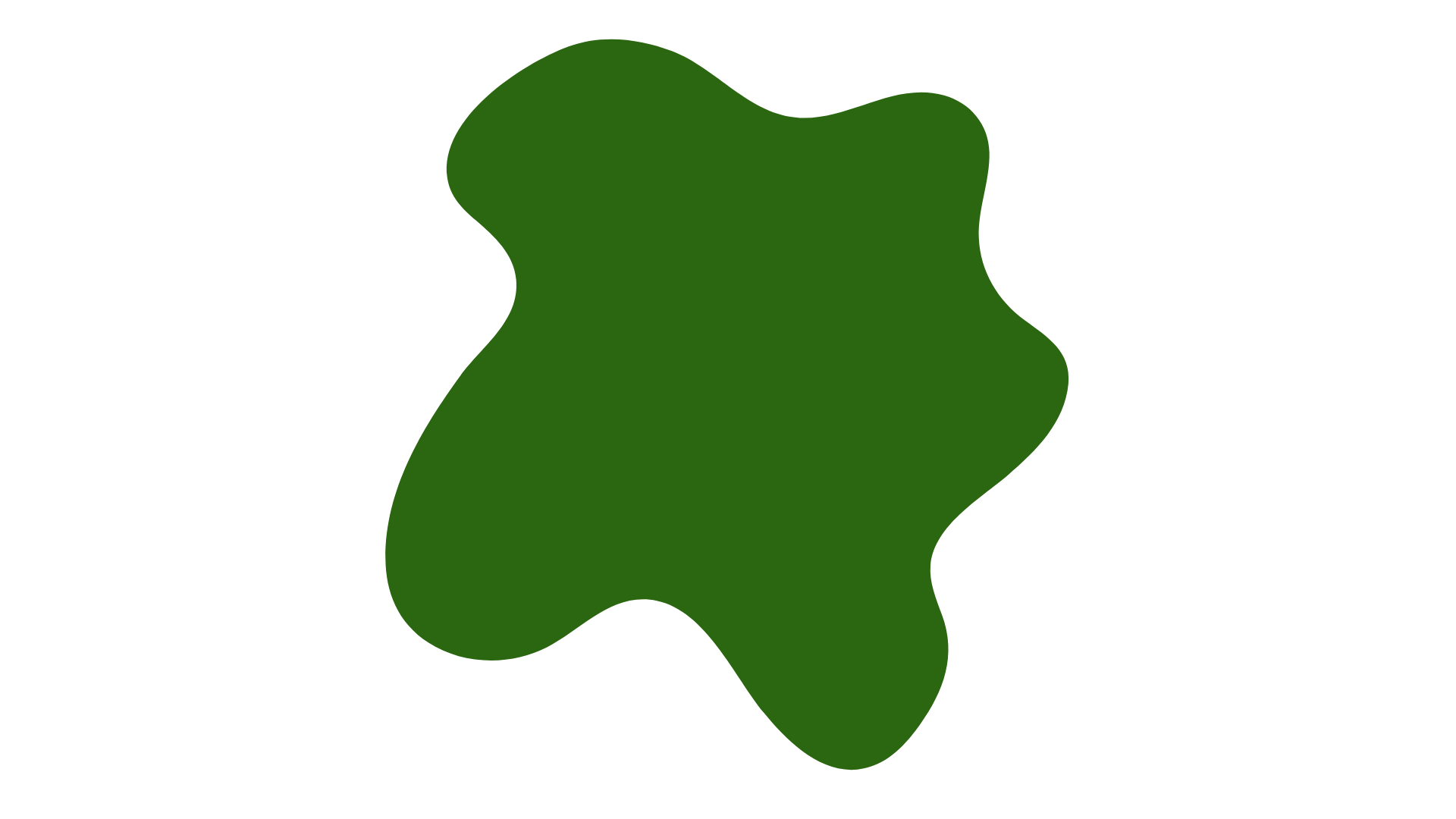
Utilized toxic baits to attract and eliminate rodent populations. These baits are typically made of food materials that are appealing to rodents, such as grains or seeds, mixed with a toxic substance. When rodents consume the bait, they ingest the toxic substance, leading to illness and eventual death.

We will send you a digital report that contains the details of treatment done.
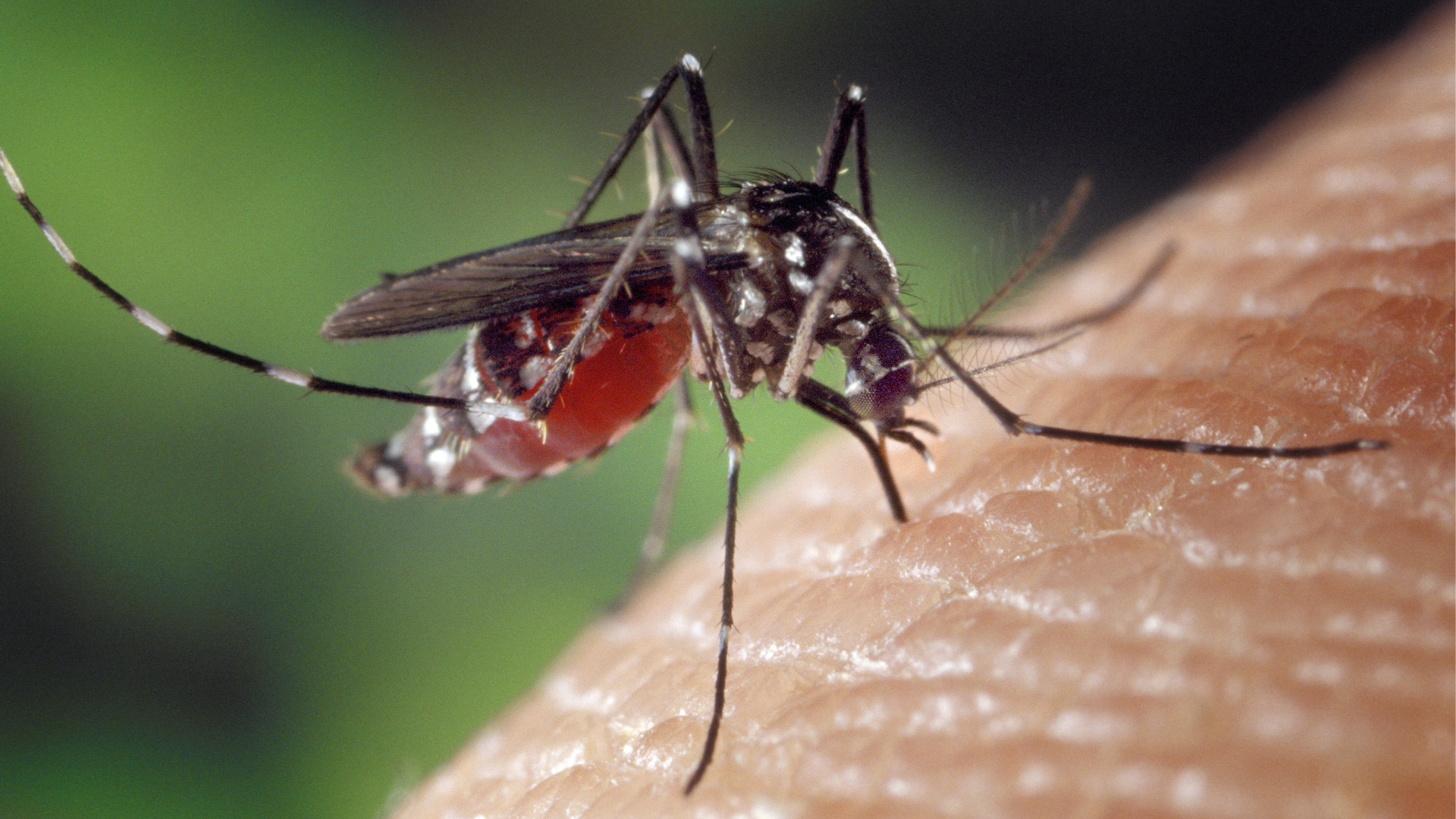
Mosquitoes are small flying insects known for their ability to transmit diseases such as malaria, dengue fever, Zika virus, and West Nile virus. They are most active during dawn and dusk and are attracted to carbon dioxide, body heat, and certain odors emitted by humans and animals.
Mosquitoes breed in stagnant water, laying their eggs in containers, ponds, puddles, or any other water source. Their larvae develop in water and feed on organic matter before emerging as adults. Female mosquitoes require blood for egg production and can bite multiple times to obtain a blood meal.
Effective mosquito control measures typically involve eliminating breeding sites, using insecticides or larvicides to target larvae, and employing personal protective measures such as insect repellents and mosquito nets. Community-wide efforts, including public education and sanitation initiatives, are essential for reducing mosquito populations and mitigating their impact on human habitats.

Our technician will conduct a thorough examination of both the interior and exterior of a property to identify signs of pest activity, assess the extent of infestation, and determine potential entry points and conducive conditions for pests.

An innovative method that employs attractants such as carbon dioxide to lure female mosquitoes into recycled polypropylene traps to lay eggs, kill larvae and lastly kill female mosquitoes from spreading further.
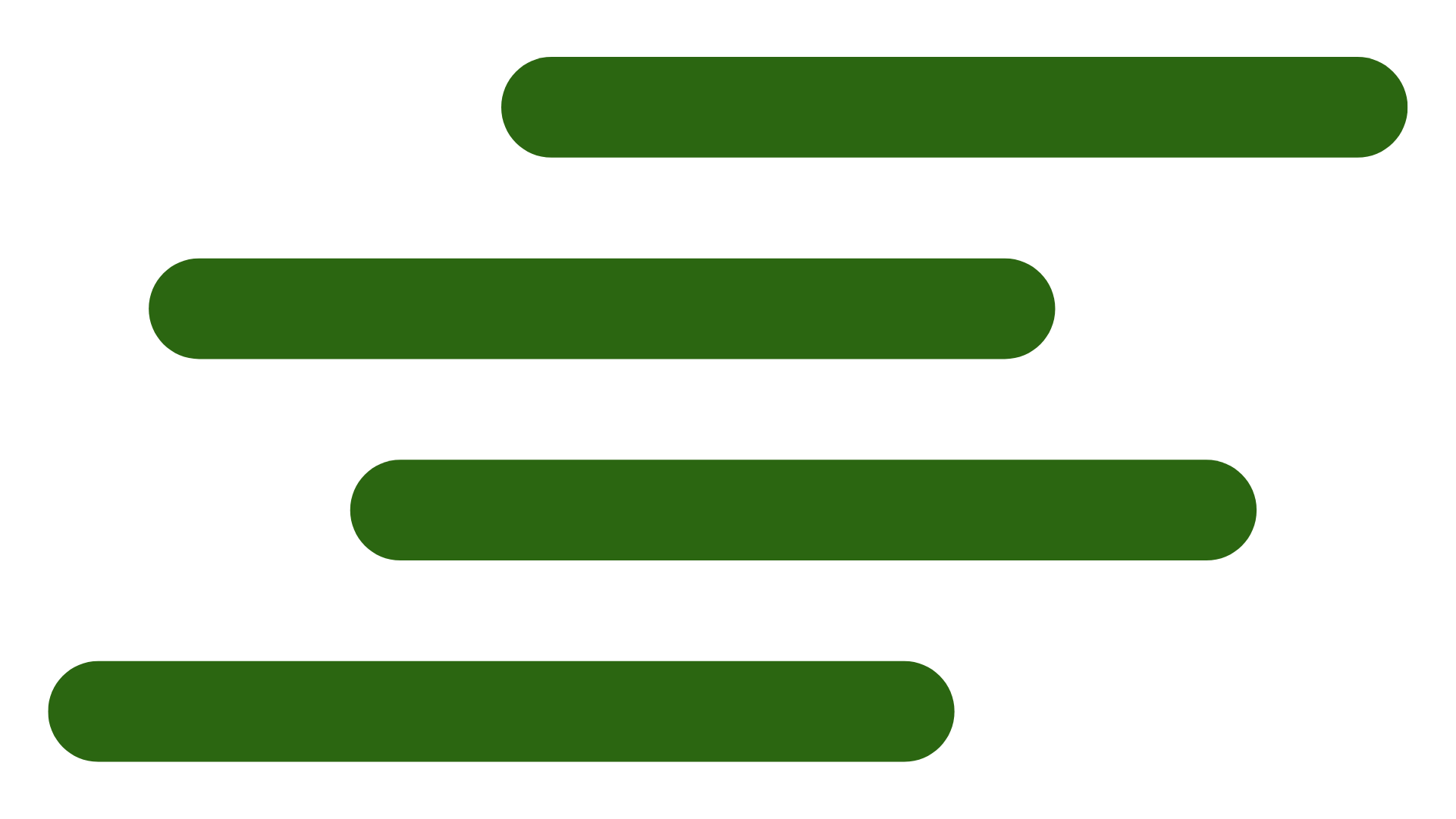
We disperses insecticides in extremely fine droplets, typically between 5 to 30 microns in size, to effectively target flying mosquitoes. This method is particularly useful for outdoor mosquito control in areas with high mosquito activity or disease transmission risk.
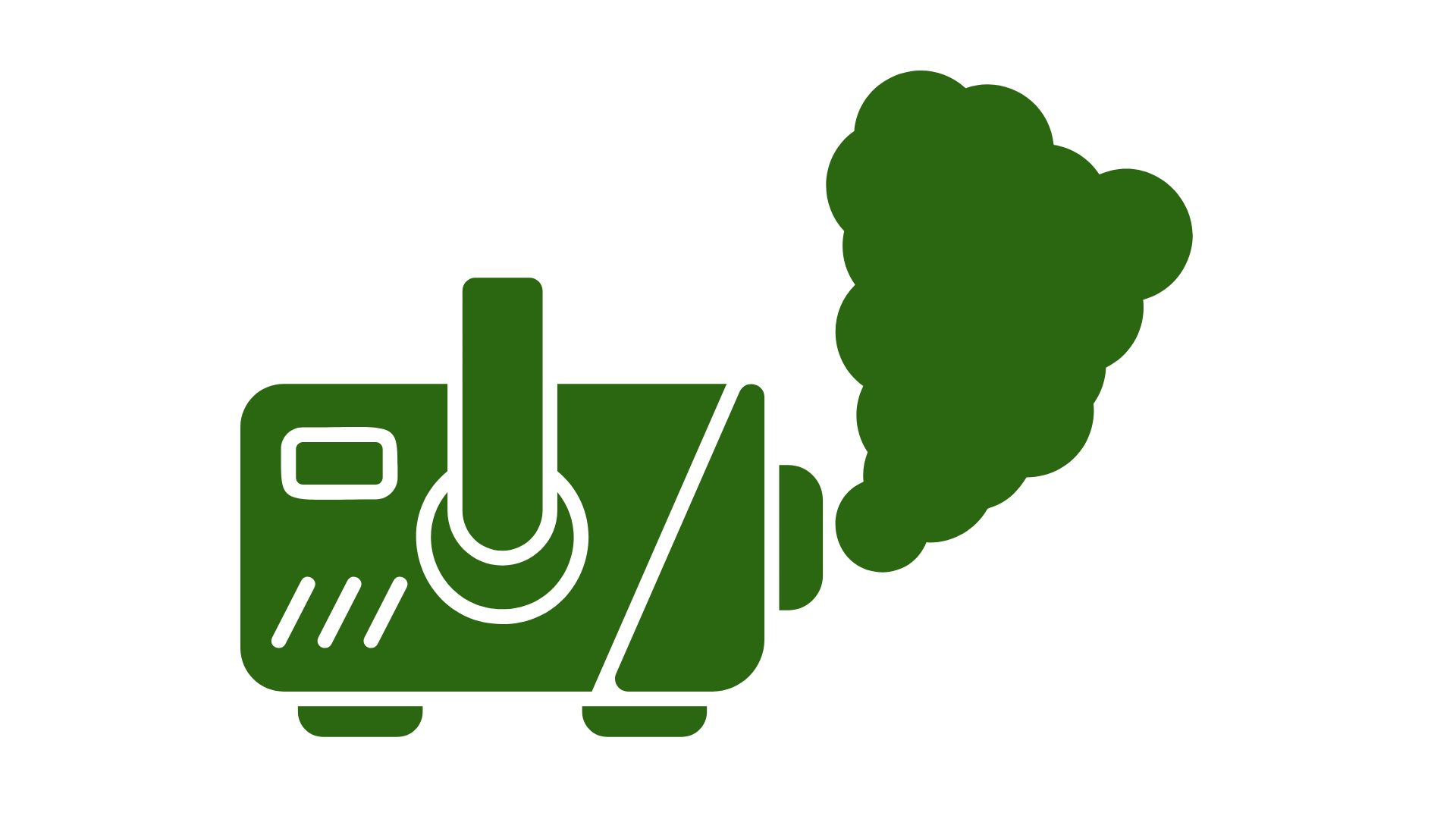
We use water as a carrier for insecticides to produce a fine mist that stays airborne longer and offers better distribution. Differ from the traditional oil-based fogging,water-based fogging leaves minimal residual and environmentally friendly for plants and non-target organisms.

We will send you a digital report that contains the details of treatment done.
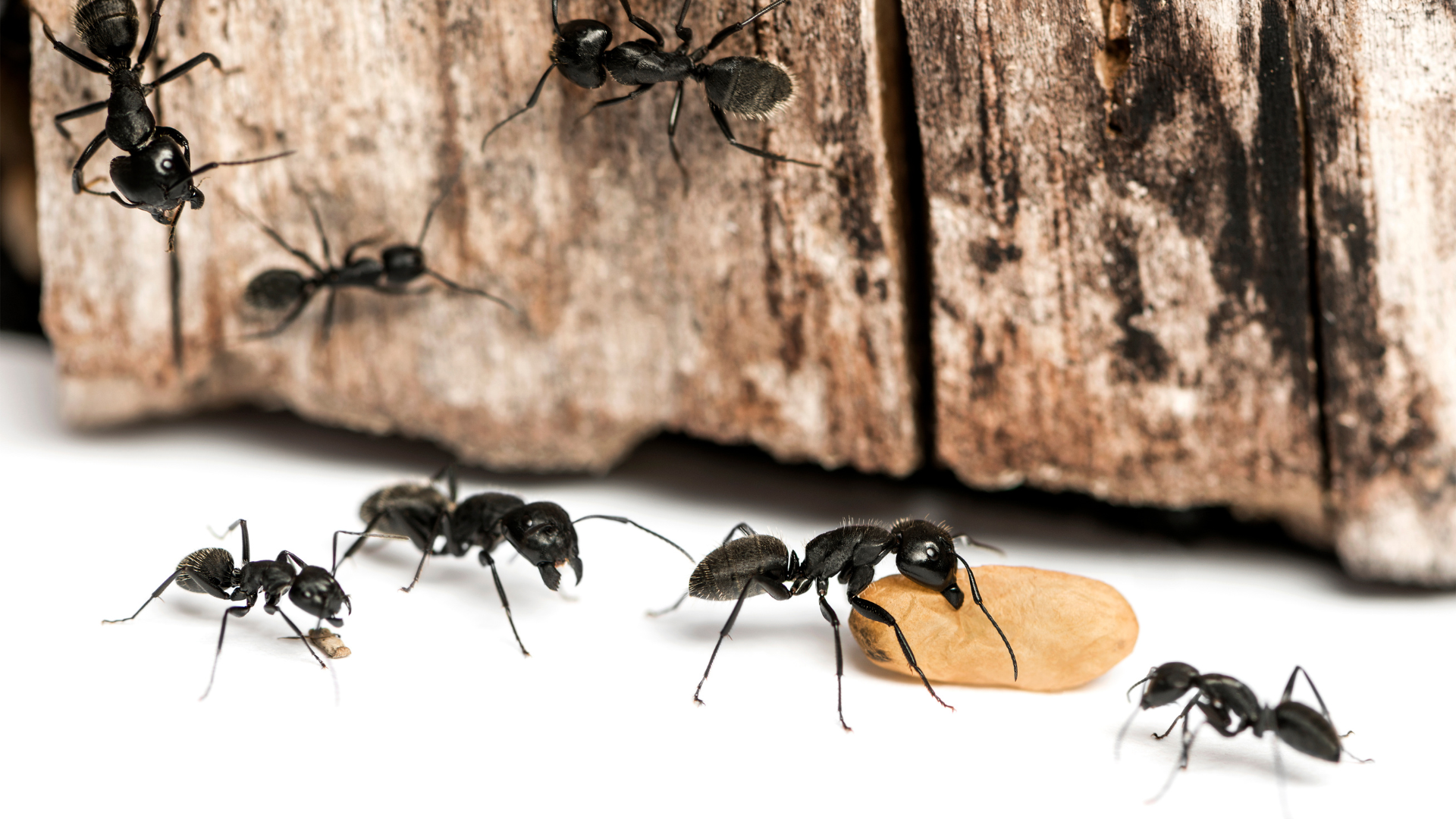
Ants are highly social insects, living in colonies with defined roles for each member. They communicate primarily through chemical signals, using pheromones to coordinate activities such as foraging, defense, and reproduction. Their behavior is organized, with specialized workers gathering food, caring for the young, and maintaining the nest. Additionally, certain ant species, such as fire ants, can deliver painful stings that may cause allergic reactions in sensitive individuals.
Controlling ant populations often involves identifying and sealing entry points, removing food sources, and using baits or insecticides strategically. Integrated pest management techniques aim to minimize reliance on chemical controls and promote long-term ant management solutions.
Visible trails of ants moving in and out of your home or along walls in a line, particularly leading to a food source.
Ant nests often appear as small mounds of soil, usually concealed outdoors or within your property. These mounds signify areas where ants have excavated beneath the surface, constructing intricate underground tunnels.
Piles of excavated material, known as "frass," near nest entrances, which ants push out as they dig or enlarge their nests.
Winged ants emerging indoors, particularly during warmer months, may indicate the presence of a mature ant colony.
Scent trails consist of pheromones that guide other ants to locate sources of food. By detecting these trails, additional ants gain access to food or water within your home environment.
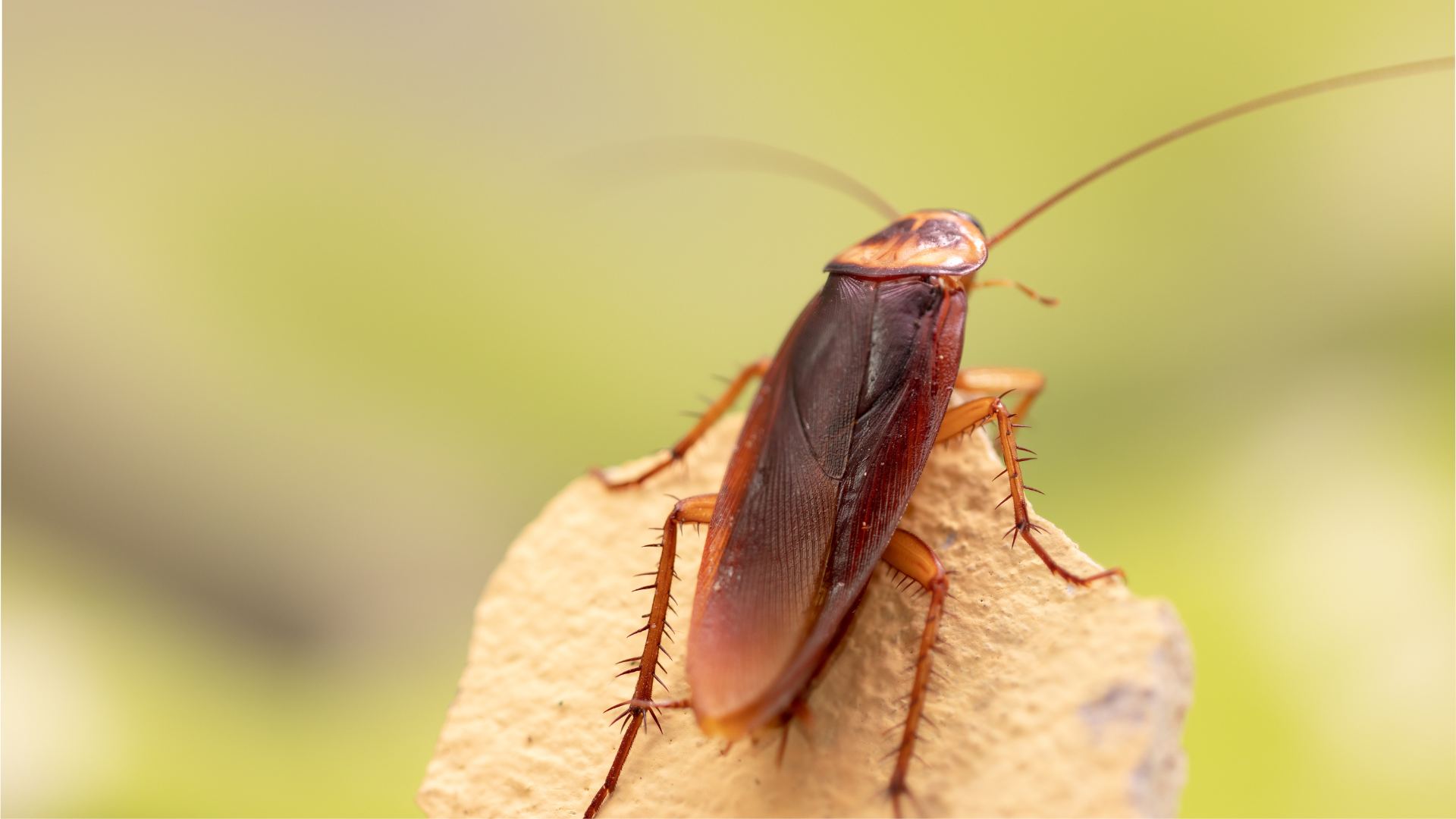
Cockroaches are nocturnal scavengers, seeking out food, water, and shelter primarily during the night. They are omnivorous, feeding on a wide range of organic matter, including food scraps, paper, and even glue. Their ability to squeeze through tiny cracks and crevices enables them to infiltrate human habitats, where they can multiply rapidly if conditions are favorable.
In human habitats, cockroaches can pose significant health risks. They are known carriers of pathogens, including bacteria such as Salmonella and E. coli, as well as allergens that can trigger asthma and other respiratory issues. Additionally, their droppings and shed skin can contaminate food and surfaces, leading to foodborne illnesses and exacerbating allergies
Efforts to control cockroach populations often require a combination of sanitation measures, habitat modification, and targeted pesticide applications.
Observing live cockroaches, especially during the day (as they are typically nocturnal), is a clear indicator of an infestation.
Cockroach feces resemble small, dark specks or cylindrical pellets and are often found in areas where cockroaches frequent, such as kitchen cabinets, drawers, and behind appliances.
Cockroaches emit a musty, oily odor that becomes more noticeable with larger infestations.
Cockroach egg cases, known as oothecae, may be found in hidden areas such as behind furniture, in cracks, or under sinks.
Cockroaches shed their exoskeletons as they grow, leaving behind empty shells that may accumulate in areas where they harbor.
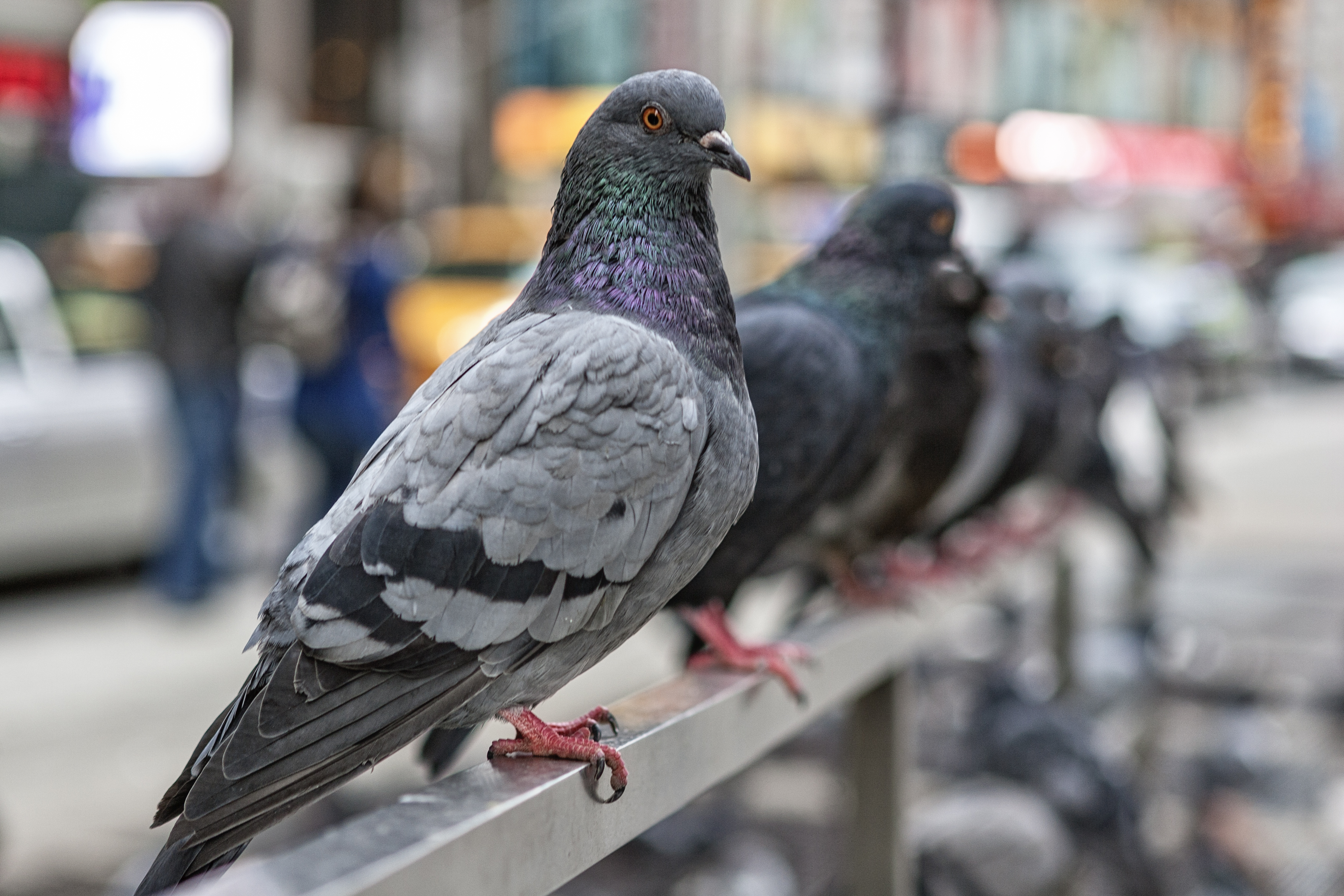
Birds are diverse and adaptable creatures with a wide range of behaviors depending on their species. They play essential roles in ecosystems, such as pollination, seed dispersal, and insect control. However, in human habitats, birds can sometimes become pests, causing various issues.
Birds may exhibit nesting behavior in or around human structures, leading to property damage and potential health hazards from droppings and nesting materials. They can also create noise disturbances, particularly during mating seasons or when forming large roosts.
Managing bird populations in human habitats often involves a combination of deterrents, habitat modification, and humane exclusion methods. Effective strategies aim to minimize conflicts while promoting coexistence between birds and humans.

Our technician will conduct a thorough examination of both the interior and exterior of a property to identify signs of pest activity, assess the extent of infestation, and determine potential entry points and conducive conditions for pests.

We use non-toxic, multi-sensory repellent that deters birds from roosting and nesting on treated surfaces. The gel works by creating a visual illusion of fire or smoke, which birds instinctively avoid.

We use bird spikes to prevent birds from landing, roosting, or nesting on surfaces. When installed on ledges, rooftops, window sills, signs, and other flat or curved surfaces, the spikes create an uneven, uncomfortable surface that birds cannot land on.
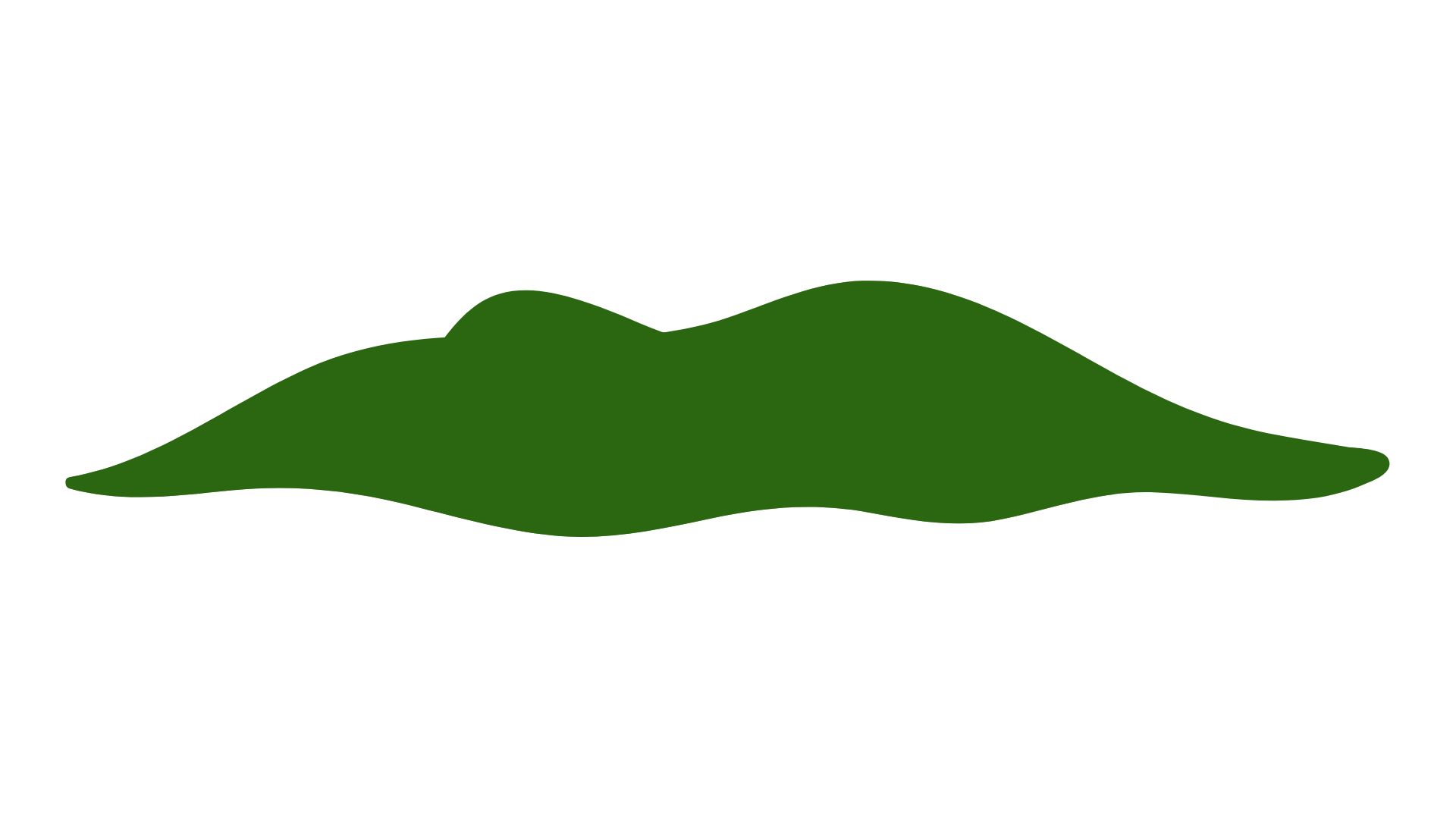
We install a mesh netting barrier to prevent birds from accessing specific areas. The netting is made from durable materials like polyethylene or polypropylene and typically used to protect areas such as rooftops, gardens, building facades, warehouses, and agricultural crops. By creating a physical barrier, bird netting effectively blocks birds from roosting, nesting, and causing damage.

We will send you a digital report that contains the details of treatment done.
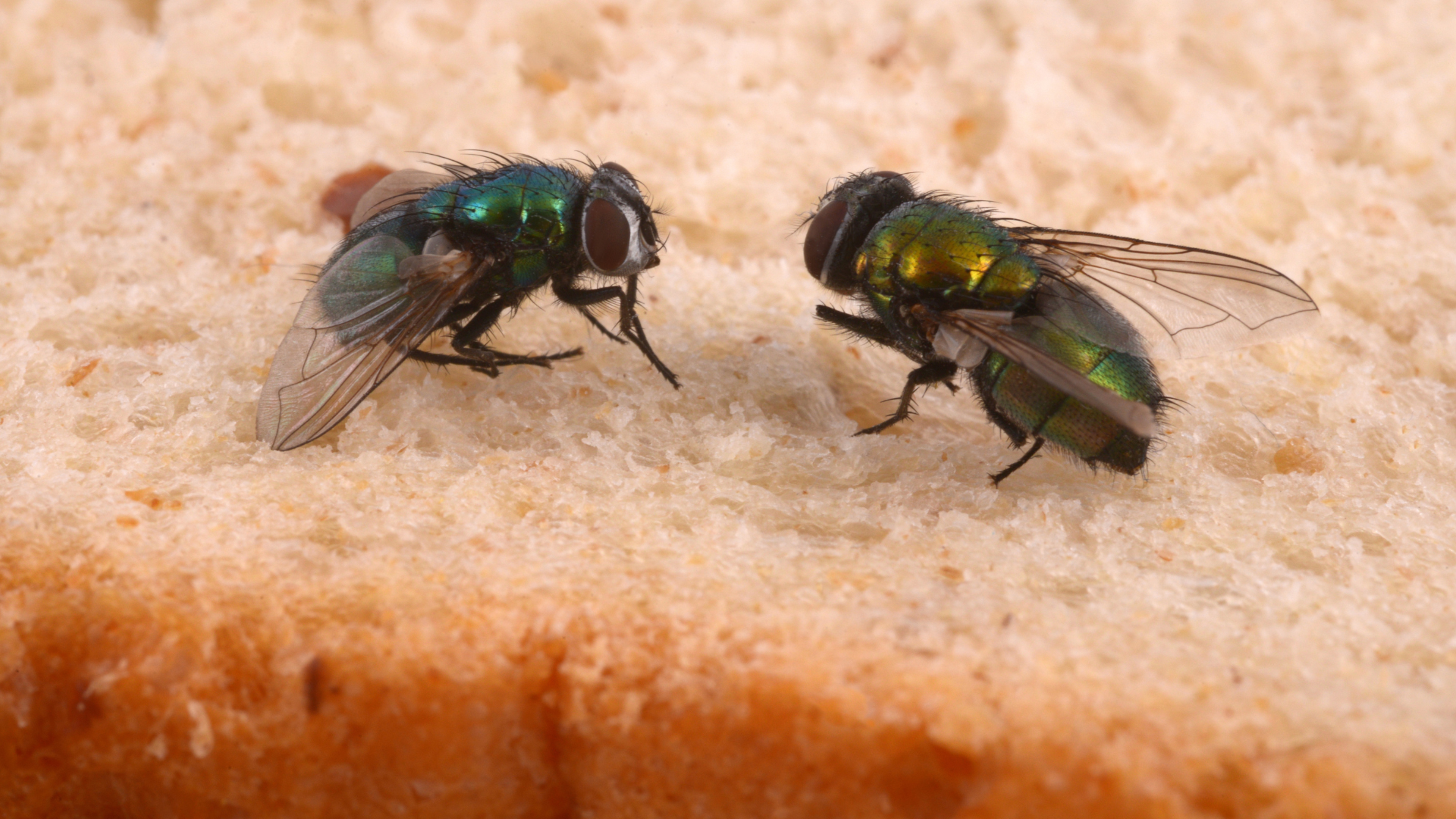
Flies are ubiquitous insects known for their rapid reproductive rate and diverse behaviors. They are attracted to decaying organic matter, garbage, and food waste, making them common pests in human habitats. Flies breed in moist environments, laying eggs in rotting organic materials such as food scraps, animal waste, or stagnant water.
In human habitats, flies can negatively impact sanitation standards, food safety, and overall quality of life. They can infest homes, restaurants, food processing facilities, and agricultural settings, posing health risks to residents, workers, and consumers.
Controlling fly populations typically involves implementing sanitation measures to eliminate breeding sites, such as proper waste management and sanitation practices. Additionally, using fly traps, insecticides, and screens on windows and doors can help reduce fly numbers and minimize their impact on human habitats.

Our technician will conduct a thorough examination of both the interior and exterior of a property to identify signs of pest activity, assess the extent of infestation, and determine potential entry points and conducive conditions for pests.

Our technician will use insecticide-laced granules to attract and kill flies. These granules are formulated with attractants, such as food scents or pheromones, that lure flies to the bait. Once the flies consume the bait, they ingest the insecticide, which leads to their death.
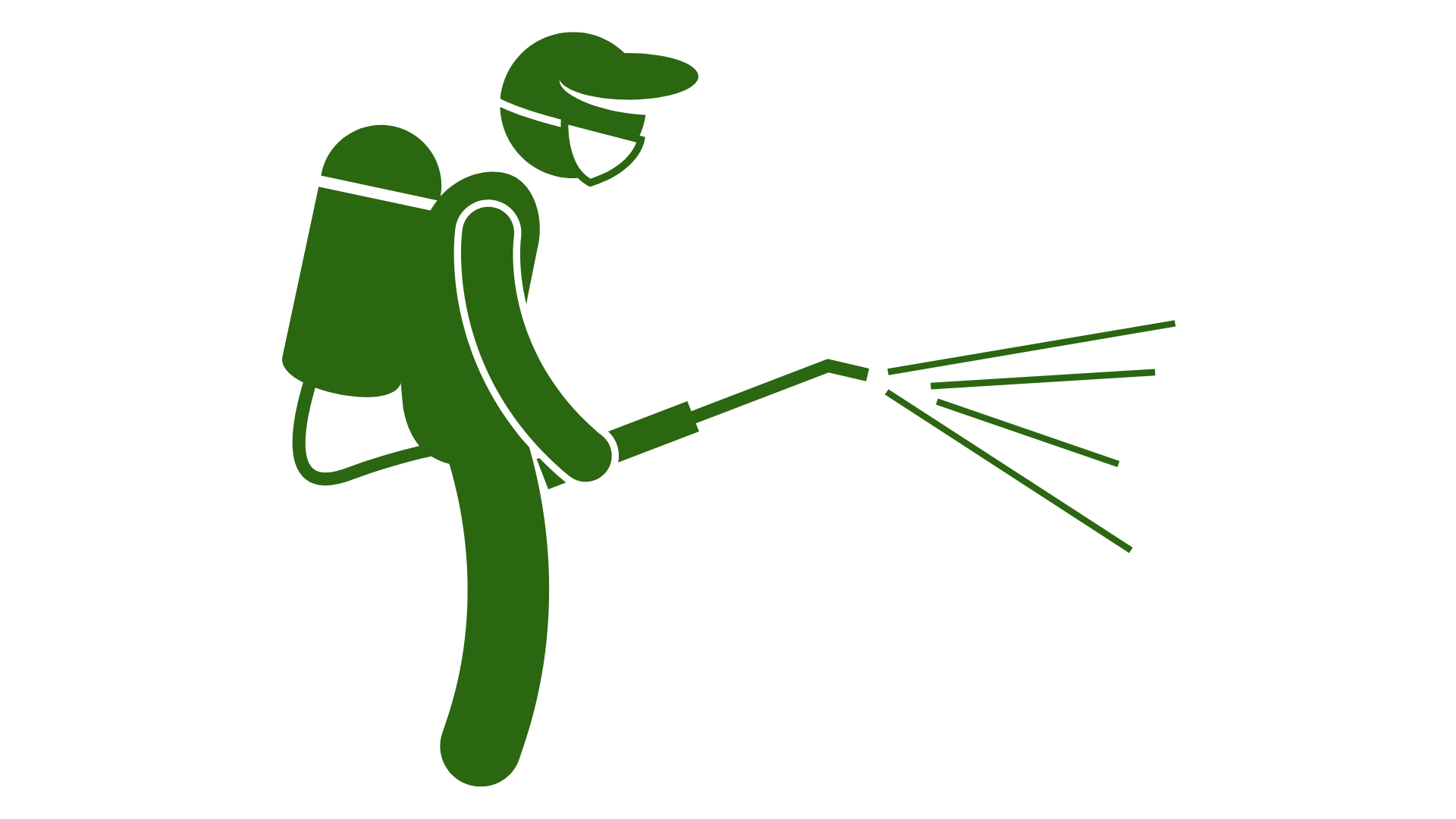
It involves applying a long-lasting insecticide to surfaces where flies are likely to land, rest, or breed. The insecticide remains active on these surfaces for an extended period, providing continuous control by killing flies upon contact.
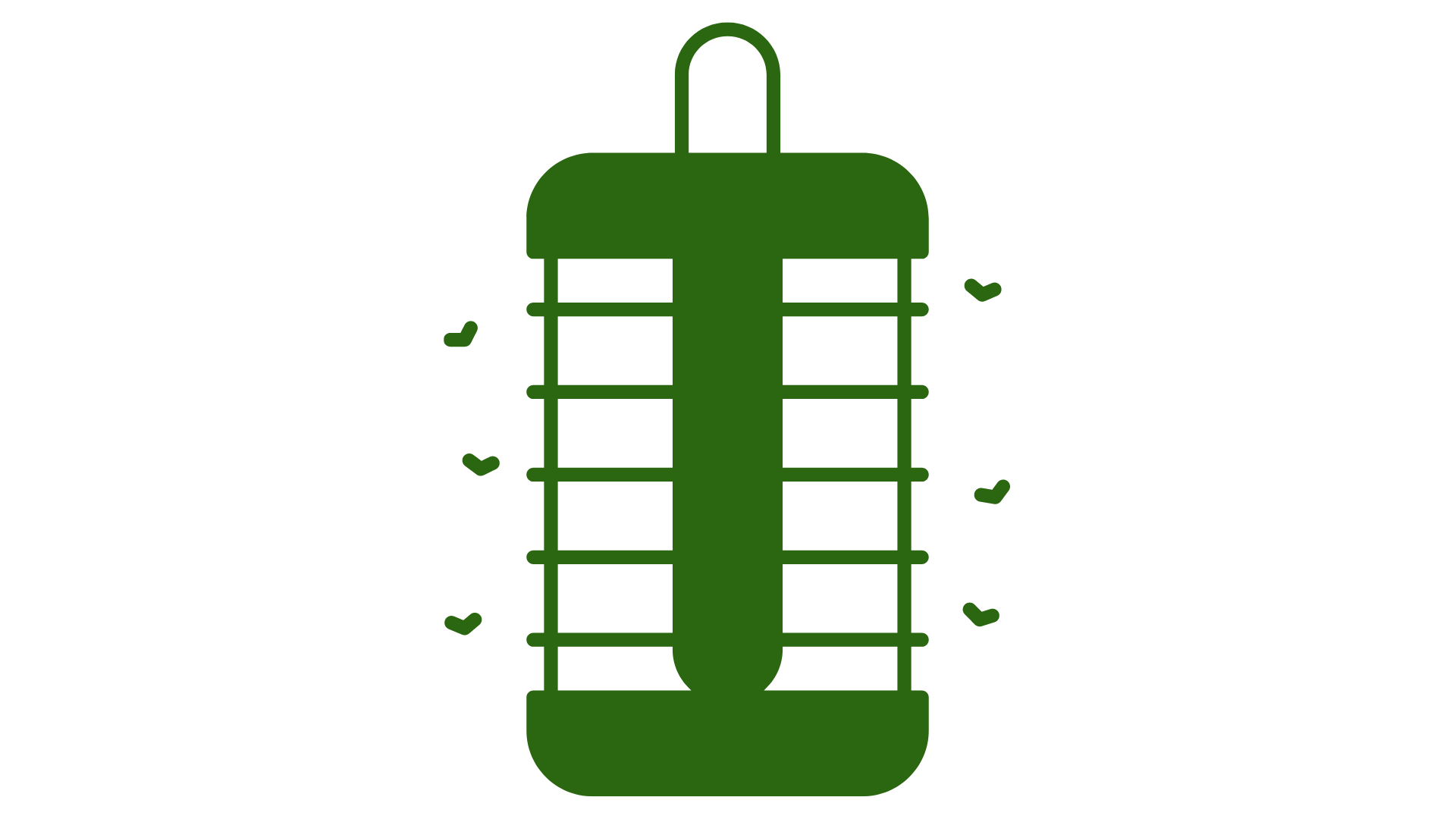
We use ultraviolet (UV) light to attract flying insects, particularly flies. Once the flies are drawn to the light, they are captured on a sticky glue board. The UV light mimics natural light sources that flies are attracted to, for controlling flies and other flying insects indoors.

We will send you a digital report that contains the details of treatment done.
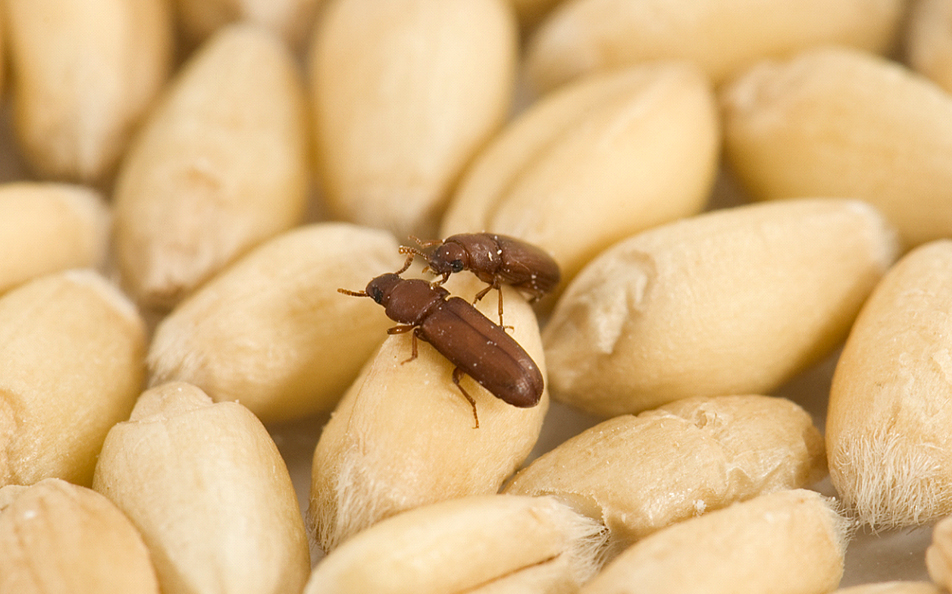
Stored product pests encompass various species, including the Cigarette Beetle, Indianmeal Moth, and Red Flour Beetle, each presenting unique challenges in the preservation of food products. The Cigarette Beetle, scientifically known as *Lasioderma serricorne*, is typically found infesting dried plant materials such as spices, herbs, and tobacco, thriving in a wide range of environments. The Indianmeal Moth, *Plodia interpunctella*, is drawn to warm and humid conditions, making homes, warehouses, and storage areas prime locations for infestation. This moth lays eggs in food products, leading to contamination and spoilage. The Red Flour Beetle, *Tribolium castaneum*, is a nocturnal insect with a marked attraction to light, often seen in grain and flour storage facilities. It is known for its resilience and ability to develop resistance to pesticides. Understanding the habits and preferences of these pests is crucial for effective pest management and ensuring the integrity of stored food products.

Our technician will conduct a thorough examination of both the interior and exterior of a property to identify signs of pest activity, assess the extent of infestation, and determine potential entry points and conducive conditions for pests.

It is a device that uses synthetic pheromones, which mimic the natural chemical signals emitted by insects to attract mates. The pheromone lure attracts the insects into the trap, where they are either captured on a sticky surface or contained within a chamber from which they cannot escape.

We apply insecticides in very fine droplets to disperse the insecticide as a mist or fog, allowing it to penetrate deep into storage areas and reach crevices where pests hide. ULV misting is efficient in controlling a wide range of pests including moths, beetles, and weevils, while using minimal amounts of insecticide, thus reducing environmental impact and residue on products.

We will send you a digital report that contains the details of treatment done.
Copyright (C) PestClean Sdn. Bhd. Managed by Pillars Media